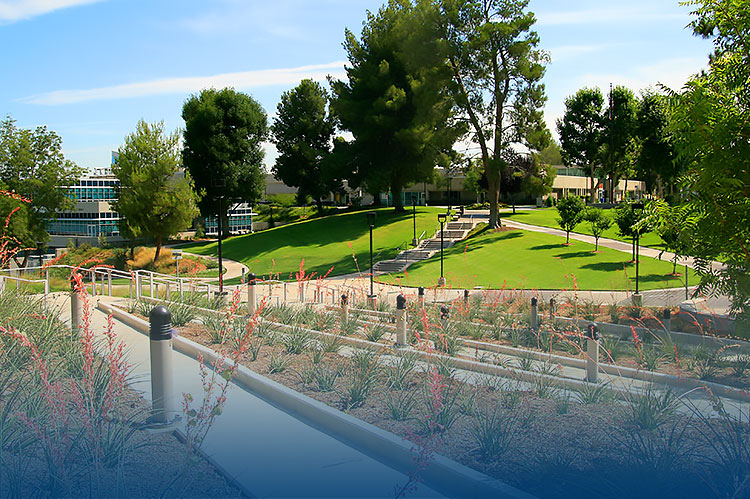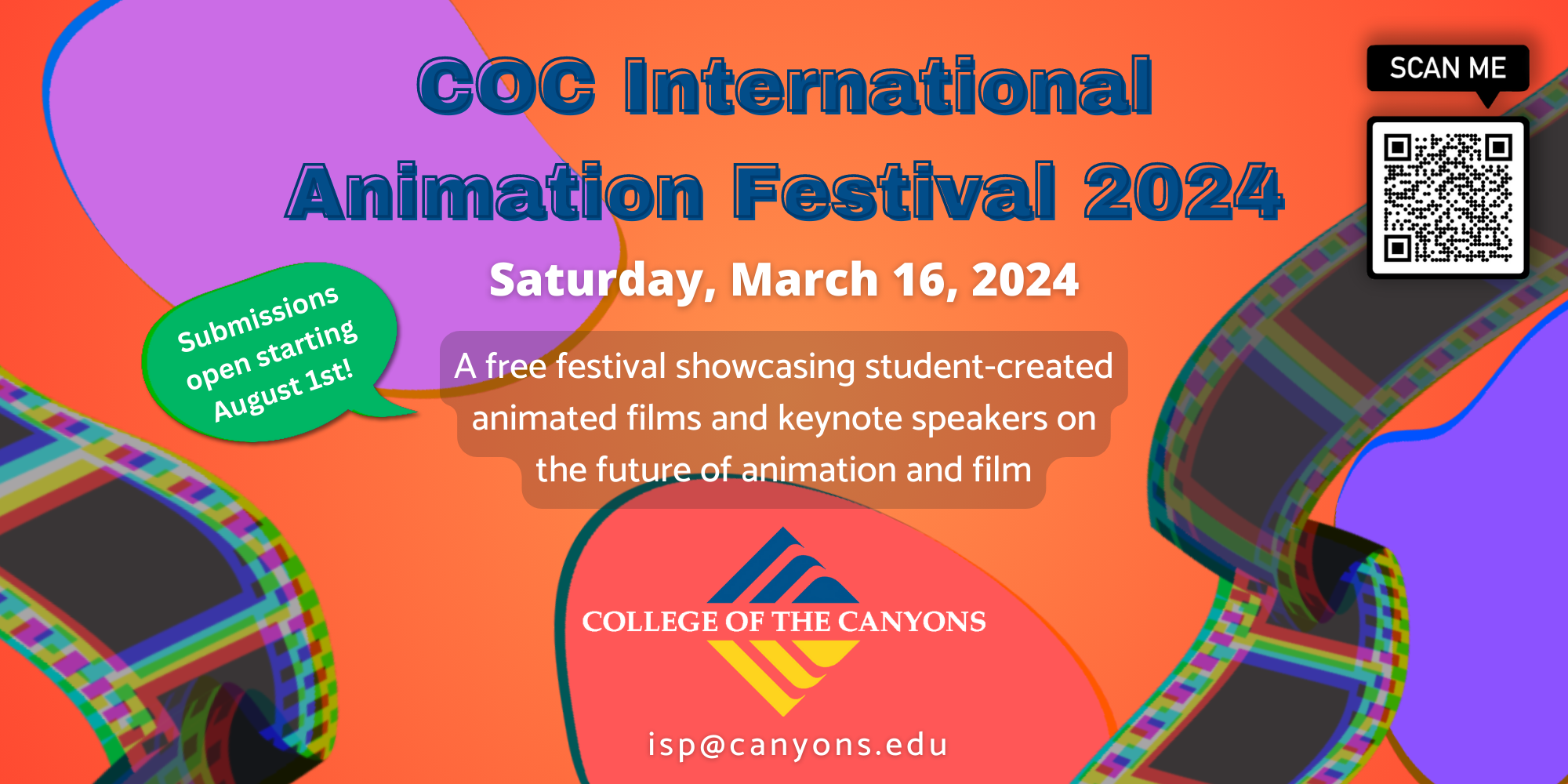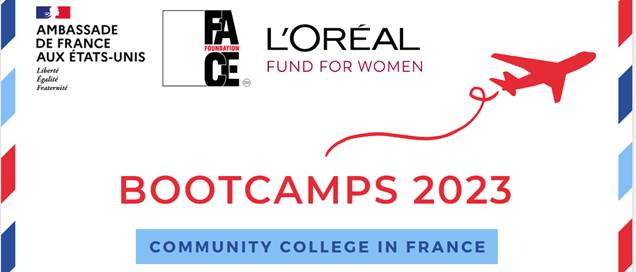News & Events
College of the Canyon’s journey to streamline international student application processes with Q24
The 2023/24 academic year marked a new milestone for U.S. higher education, with international student enrollment reaching record highs. Among the states, California stood out as a leader, attracting 138,393 international students and solidifying its reputation as a global education hub.
California colleges are meeting the increasing demand with transformative approaches to student recruitment and admissions. College of the Canyons, a public community college in Santa Clarita, California, exemplifies this forward-thinking spirit. Beginning in January 2025, the college integrated Q24 software, an innovative CRM designed to revolutionize the student admissions process. Proven to increase conversion rates by up to 212% and enhance operational efficiency threefold in European institutions, Q24 is now making its debut in the United States.
Q24 CRM not only streamlines admissions workflows but also strengthens collaboration with recruitment agents. The platform automates essential tasks such as managing student applications, tracking agent commissions, and centralizing communications, ensuring a seamless experience for both colleges and agents.
Adrian Petruk, Customer Support Manager at Q24 CRM, highlighted the platform’s results-driven model:
“Our solution empowers institutions to enhance their recruitment strategies by tying service costs to tangible outcomes. This approach ensures every feature—from application tracking to commission management—directly supports higher enrollment and operational efficiency.”
Tim Honadel, Director of International Services & Programs at College of the Canyons, noted the system’s impact:
“With the Q24 CRM, we’re enhancing our agent support system to make their business processes easier. Our office continues to grow its reputation among education agents and institutions as business friendly. Q24 is just another step at optimizing education agents’ ability to keep their promises to their student clients and their families. By adopting the Q24 CRM, we are demonstrating our dedication to innovation and solidifying our position as a leader in student recruitment and global engagement. This collaboration demonstrates how modern tools can bridge gaps and create new opportunities for students around the world to realize their academic dreams.
https://www.statista.com/statistics/237703/us-states-hosting-the-most-international-students/
APRIL 11, 2024 - NEW CHAPTER OF ALPHA BETA GAMMA AT COC!
COC Beta Sigma is the new chapter of Alpha Beta Gamma National Business Honor Society! Visit the Alpha Beta Gamma page to learn more about the society, membership requirements, and how to apply!
AUGUST 24, 2023 - SUBMISSIONS FOR INTERNATIONAL ANIMATION FESTIVAL 2024 OPEN NOW
Submit your animated films by JANUARY 31, 2024!
MARCH 28, 2023 - COVID-19 CAMPUS TESTING SITES UPDATE
The L.A. County COVID-19 testing site located in the Parking Structure at College of the Canyons will be closing as of March 31, 2023.
COC will continue to have free COVID-19 testing located on the Valencia and Canyon Country campus for students.
Please visit the College of the Canyons COVID-19 Updates page for the most up-do-date information, including testing site locations and hours.
JANUARY 9, 2023 - 2023 SUMMER COMMUNITY COLLEGE IN FRANCE BOOTCAMPS: DEADLINE TO APPLY IS JANUARY 31, 2023
Get ready for a two-week culturally immersive experience in France! Spend the summer abroad, broaden your intellectual horizon and improve your transversal skills. The Bootcamps will look at sustainability issues from a multidisciplinary perspective and provide a unique edge to your degree.
HOW TO APPLY:
Applications are open from December 5, 2022 to January 31, 2023.
- Fill out the online form
- Provide your most recent transcript of records
- Be nominated by your community college
NOVEMBER 23, 2022 - RENNES SCHOOL OF BUSINESS SHORT TERM 2023 SUMMER PROGRAM
Rennes School of Business
Bachelor in Management - 100% in English
Short Term Summer Sustainable Business Bootcamp!
June 18 - July 1, 2022
Application Deadline - January 31, 2022
- Scholarships are available from the French Embassy.
- Participation in this program will then give you access to a tuition scholarship the next year.
Admission Requirement for Year 3:
-
- A strong academic background
- 2 years of undergraduate studies (120 ECTS or equivalent)
AUGUST 5, 2022 - CAMPUS ENTRY REQUIREMENTS
You are no longer required to show proof of vaccination or negative test result to enter campus, and you are not required to wear a face mask. However, masks are strongly recommended in most indoor public spaces by the Los Angeles County Department of Public Health.
CLICK HERE for the most up-to-date information about COVID-19 safety at COC.
JANUARY 28, 2022 - NEW REQUIREMENT REGARDING BOOSTERS
Students and employees who are vaccinated without booster shots (and are eligible to receive them) are now required to test weekly and provide their negative test results to the college.
Vaccinations, Boosters, & Testing available at the Valencia Campus. CLICK HERE for details.
DECEMBER 2, 2021 - GRAND OPENING: TAKEDA SCIENCE CENTER
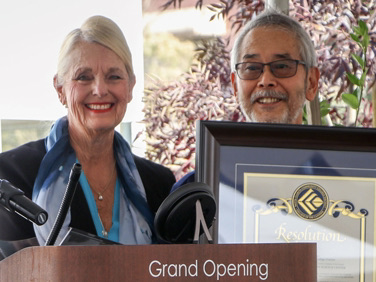
On Wednesday, Dec. 1, College of the Canyons held a ribbon cutting ceremony for the Don Takeda Science Center, which is named in honor of longtime biology instructor Don Takeda, who retired in 2017. Located at the Canyon Country campus, the 55,000-square-foot building is primarily devoted to the physical and biological sciences and serves as a focal point for students and first-time visitors. "The Science Center is the most significant change to the Canyon Country campus since it opened 14 years ago," said Chancellor Dr. Dianne G. Van Hook. "It will be the largest building built on the campus to date. It effectively doubles the available classroom and lab space that was available on the Canyon Country campus and it will offer more instructional space for science curriculum that we currently have at the Valencia campus in three science buildings."
CLICK HERE TO READ FULL ARTICLE.
OCTOBER 25, 2021 - SUSTAINABLE DESIGN & DEVELOPMENT PROGRAM
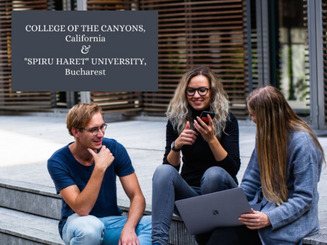
COC and Spiru Haret University in Bucharest, Romania are offering an online certificate program starting this fall for motivated students & professionals pursuing a career in sustainable design & development.
SEPTEMBER 21, 2021 - STUDENT INCENTIVES OFFERED

Students are being offered a variety of incentives this academic year, including a $300 bookstore voucher for submitting proof of vaccination against COVID-19. Other enticements include free parking at both campuses, COVID-19 grants, Zoom zones for online learning, hybrid classes, and campus employment for a variety of positions such as job developer, in-class tutor, instructional aide, and Zoom facilitator.
JULY 29, 2021 - FALL RUSH WEEK!

Fall Rush kicks off Monday, Aug. 2 at the Valencia campus to help students register for fall. Student Services will provide personalized guidance and assistance at Canyons Hall and online. For more information, call (661) 362-5891, send an email to outreach@canyons.edu, or follow the link below. Pass it along!
JULY 28, 2021 - HEAR FROM DR. VAN HOOK
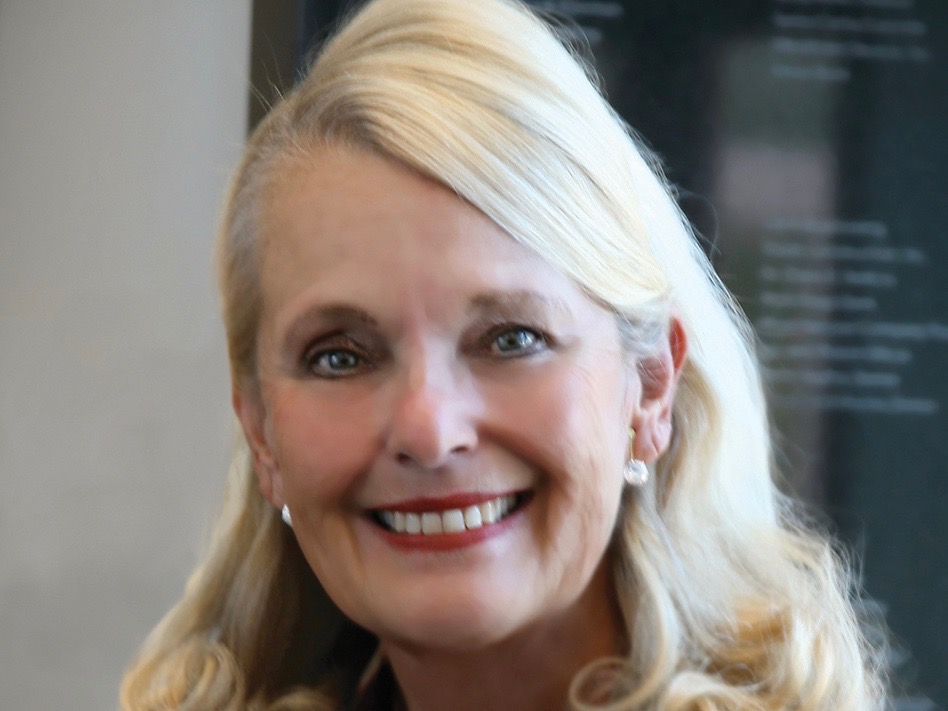
As the beginning of the fall semester approaches, we at College of the Canyons are ready and eager to welcome our students back on campus. With one-third of our classes being offered in person during the upcoming fall 2021 semester... CLICK HERE TO READ FULL ARTICLE.
STUDENTS
College of the Canyons joins other higher education institutions in our state and across the country to applaud the decision to revoke the operational that would have required international students to leave the United States if they were not taking in-person classes this Fall.
JULY 7, 2020 - GUIDANCE CONCERNING RECENT VISA INFORMATION
Recently, the U.S. government issued information concerning student visas for the Fall 2020 semester. Students may find it to be a useful source of guidance in their deliberations concerning Fall 2020 at College of the Canyons.
Statement in Support of International StudentsJuly 17, 2020 Dear Students: College of the Canyons joins other higher education institutions in our state and across the country to applaud the decision to revoke the operational that would have required international students to leave the United States if they were not taking in-person classes this Fall. This misguided effort sent a strong but untrue message that international students are not welcome here. At College of the Canyons, our message to our international students is: You are welcome here. We appreciate the multitude of ways international students contribute to the academic, cultural, and economic fabric of our community and the country. College of the Canyons' core values of student access, equity, and success applies to all of our students, regardless of their country of origin. We believe international students' desire to study at COC bears a strong testimony to the excellent education and equal opportunity COC provides. We will continue to work towards fostering a welcoming learning environment where we embrace linguistic differences, respect diverse opinions, and celebrate multicultural and ethnic heritages. Our International Services and Programs (ISP) Office will continue to provide guidance for our international students, closely monitor shifting changes in policies, and work with the administration to identify classes that meet both ICE and L.A. Department of Public Health guidelines. We want our international students to know that we are here to support you. We encourage you to reach out to our ISP office at isp@canyons.edu should you have questions related to these evolving issues. Sincerely, Dr. Dianne Van Hook Dr. Jia-Yi Cheng-Levine |
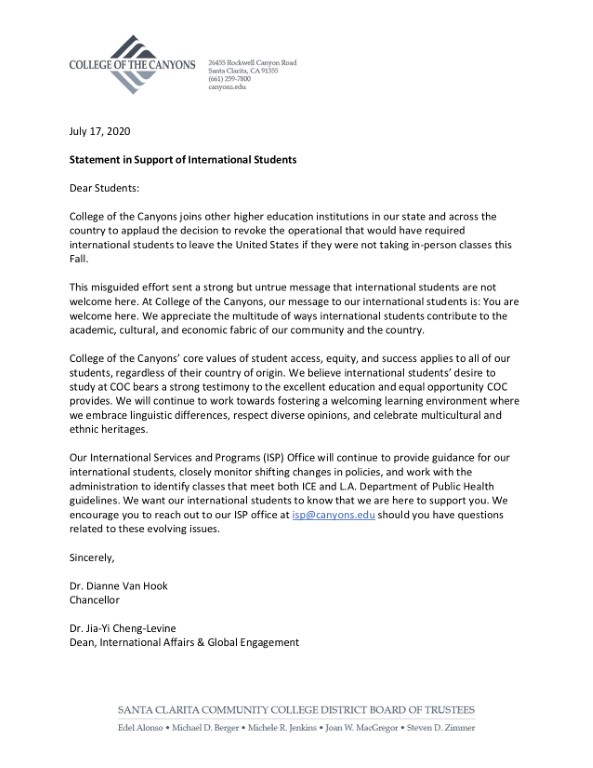 |
MAY 8, 2020 - MEET IELP INSTRUCTOR AND ACADEMIC COUNSELOR AMY UY
Written by: Byron Campbell, IELP Instructor and ISP Special Projects
If you come to College of the Canyons as an international student, you will probably meet Amy Uy. Not only is she ISP's Lead Academic Counselor, she is also an adjunct professor teaching several classes on campus, including two classes in our Intensive English Language Program and one class that is taught to almost every first-year student. You might even see her at the college's Sustainability Center, helping bring wildlife and natural beauty to the campus and preserve the environmental health of the Santa Clarita Valley.

Written by: Byron Campbell, IELP Instructor and ISP Special Projects
If you come to College of the Canyons as an international student, you will probably meet Amy Uy. Not only is she ISP's Lead Academic Counselor, she is also an adjunct professor teaching several classes on campus, including two classes in our Intensive English Language Program and one class that is taught to almost every first-year student. You might even see her at the college's Sustainability Center, helping bring wildlife and natural beauty to the campus and preserve the environmental health of the Santa Clarita Valley.
Amy has been teaching in COC's Intensive English Language Program since its first semester, so she has played a big role in the language school's growth and success. The subjects she has taught include College Reading & Vocabulary and Academic Success in the U.S. Higher Education Classroom. Even if you are not an IELP student, you might find Amy teaching your Student Success course (COUNS 150), a course that teaches new college students strategies, habits, and attitudes to succeed in higher education and in their careers. Because she is an academic counselor who works with international students, Amy has great insight into the challenges students face adapting to a new academic culture, and she knows exactly what skills students need to develop to successfully complete their degrees or transfer to a four-year university like UCLA, UC Berkeley, USC, or Stanford.
Part of what makes Amy such an excellent professor and counselor is her caring, empathetic nature. I have never met an instructor who cared more about her students' challenges and success. While she started out in a specialized English language training program for international students, Amy knew she wanted to help students both inside and outside of the classroom. Being an academic advisor and counselor allows her to do exactly that.
As a counselor, Amy helps students figure out their "path"-the classes, grades, and other things they will need to get their degree or transfer successfully to a four-year university. She talks with students about their goals, whether they include a degree, certificate, transfer to a specific school, or long-term career plan, and helps them navigate a path so that they can stay on track toward those goals.
Amy told me that counseling international students requires a different set of skills and outlooks than counseling for domestic students: "The counselor, in my opinion, should be well-equipped and knowledgeable in how to communicate, as well as knowledgeable in the areas of difficulty or concerns that an international student might have." Amy also helps international students make sure their class schedules are manageable, guiding them to pick the right balance of classes to maintain their visa status and work toward their goals without getting overwhelmed. The goal, she said, is for a student's schedule to be "well rounded."
As a general rule for students to avoid getting overwhelmed, Amy said to think of each unit of a class as three hours of actual work each week: one hour in class and two hours of homework or outside study. That means that a three-unit class will take nine hours of work each week, and enrolling in fifteen units for the semester will demand forty-five hours of effort from the student, every week!
To help our students find their well-rounded course load, Amy shared one tip with me about international student enrollment. By the time international students arrive in the country and can enroll in classes, many domestic students (students who are American citizens) have already registered and enrolled, so some international students might find the classes they want to take are full. Amy has a solution: "Even though students are not here yet, they can still talk with ISP counselors and advisors over Skype. We can do our appointments over Facetime, phone, or webcam." That helps ensure students can enroll as soon as their registration window opens, because "every day that passes by, the classes get more full."
Of course, the same applies to students who are unable to come on campus at this time due to COVID-19 restrictions. Our students, teachers, and counselors are all safer at home during this pandemic, so Amy and the other ISP counselors have many virtual options to keep appointments with students while keeping proper social distancing.
MAY 1, 2020 - NEGOTIATING CULTURAL EXPECTATIONS: ENCOURAGING CULTURAL CURIOSITY
Written by: Byron Campbell, IELP Instructor and ISP Special Projects
My friend Michael believes in world peace-not in the abstract, as an ideal to strive toward, but as an attainable, concrete goal. His philosophy on the problem of world peace can be summed up like this: It's not actually an impossible problem. If the world came together to solve it, they could. But as long as it's treated as a pipe dream in the public discourse, it will remain a pipe dream.
Written by: Byron Campbell, IELP Instructor and ISP Special Projects
My friend Michael believes in world peace-not in the abstract, as an ideal to strive toward, but as an attainable, concrete goal. His philosophy on the problem of world peace can be summed up like this: It's not actually an impossible problem. If the world came together to solve it, they could. But as long as it's treated as a pipe dream in the public discourse, it will remain a pipe dream.
I admire his tenacity and ambition, but I've always viewed Michael as a little naïve. As it turns out, though, I was just as naïve in my own way when it came to teaching in a multicultural classroom.
College of the Canyons' Intensive English Language Program (IELP) primarily serves international students wishing to build a foundation in the English language in pursuance of a higher education degree in the United States. This means that IELP students represent a cross-section of the international student population at COC, or at least those students from countries-primarily in Asia and Latin America-where English is not the primary language of instruction.
When I started as an IELP teacher, I had an overly optimistic vision of what that would mean. I subscribe to the masala theory of cultural diversity: each note in the spice blend of humanity enhances and elevates the others. Nobody wants to eat a plate of pure cumin, but a curry wouldn't be the same without this spice's pungent, earthy tones. Or, to use a different metaphor, we're all seeing, through the focused lens of our cultural and linguistic backgrounds, just a small part of the elephant; we won't get the whole picture without a lot of different lenses.
Imagining my multicultural class, I envisioned a group of people who were pretty much like me: all curious about each other's cultural backgrounds, all eager to learn and to share. I hadn't counted on that curiosity and eagerness itself being a product of my cultural situation.
Yeah, I had some students who saw the benefit of learning about what made each other unique. I also had some students who were perfectly content to stay within their own cultural enclaves, who hadn't made any American friends, let alone friends from South Korea or Argentina, who showed up and left class as a group, chatting in their native tongue-to the exclusion of everyone around them. They weren't blending.
Guess what? That outlook is also a part of diversity; those students were just as important as the outgoing ones to the overall blend. It wasn't great for the class dynamic or the students' English attainment, but these students were as valid a product of their upbringing as I was. Heck, I've seen enough of social media to know I can't expect much better even from my own countrymen. Tribalism is the way of the world, and especially for an international student lacking in conversational English, it can often be the path of least resistance.
At the same time, my class was not going to be a path of least resistance. Even for domestic students, higher education is about challenging assumptions and jostling students out of their established worldviews. This is doubly true for those electing to study abroad. Somehow, I needed to encourage the students to open up, but how? Even the stick of a participation grade wasn't sufficient motivation.
The answer to this conundrum will probably be different for every group of students. For me, I found that when the students couldn't come together through intellectual curiosity, they would often do so through play. I found myself dusting off my repertoire of road trip games, parlor games, and improv games-the sillier, the better. And while they were laughing together, they were opening up about other things: their siblings, their love of piano, their favorite foods. Many of these students still left the classroom chatting in their native tongue, but while class was in session, they made my vision of masala seem a little more realistic.
This wasn't the only unexpected cultural challenge I encountered. In a future post, I'll tell you about how, in my first week on the job, I came up against the very real, often entrenched, cultural and ethnic tensions that can exist even among students from the same country.
Written by: Byron Campbell, IELP Instructor and ISP Special Projects
Meet Our Program Specialist, Naomi Taniguchi
If you want to know about the Office of International Services and Programs at College of the Canyons, there's no better person to ask than Naomi Taniguchi. That's because Naomi was one of two people who founded the program in 1997.
Written by: Byron Campbell, IELP Instructor and ISP Special Projects
Meet Our Program Specialist, Naomi Taniguchi
If you want to know about the Office of International Services and Programs at College of the Canyons, there's no better person to ask than Naomi Taniguchi. That's because Naomi was one of two people who founded the program in 1997.
"We picked up our desk and chair and everything from the junkyard," Naomi recalled in an informal interview with me in ISP's staff kitchen. "Even manila folders, hanging folders, everything."
The ISP program has grown considerably in the nearly 23 years since. In 1997, there were only 11 international students at COC. After the former program director began traveling the world and actively recruiting, that number increased to 100, and it kept increasing after the current Dean of International Affairs, Dr. Jia-Yi Cheng-Levine, came on board in 2015. Now, there are over 200 international students enrolled at any time. Now, the office buys its own supplies and supports four full-time staff, a three-person advisement team, and several college assistants-mostly international students looking for on-campus employment.
Naomi has a special insight into what drives students to come to the U.S. in search of educational opportunities. Born in Japan, she first came to College of the Canyons as a student in her early thirties.
Naomi has seen several shifts in the COC international student demographics since 1997. "Back then, Japanese students were nearly half of the total ISP population," she recalled. "That was followed by Korean students." The numbers of students from those countries haven't necessarily gone down, but ISP has been successful in attracting students from other countries. Today, Chinese-speaking students represent a plurality of the international student population at COC, making up about 36% of the total.
In her current role as ISP's Program Specialist, Naomi helps students make sure they remain F-1 compliant so they can focus on working toward their degrees. (An F-1 Visa is awarded to people entering the country with the purpose of full-time enrollment in an academic institution.) As a Designated School Official for COC, she has to maintain knowledge of the constantly shifting rules and regulations the U.S. government has in place for international students.
I asked Naomi what advice she had for current and prospective F-1 students at COC. "This is my least favorite part," she began, "but towards the end of the semester, if any of the students are not completing the semester with 12 units (full-time enrollment) without our authorization to drop below 12 units, then I will have to have a meeting with them, and I will have to tell them what's going to be the consequence." The consequence, in this case, is that the student loses F-1 status and can no longer remain in the country under their current visa.
How can students avoid this? The main reason students drop a class late in the semester is if they are struggling in the subject and they are worried about the effect a D or F would have on their GPA. The alternative, though-having to leave the country and start all over in the visa process-is not worth it. Some other students might be unaware of differences between the academic culture at home and in American higher education. For example, they might not realize that they can be dropped from a class by the professor for missing a certain number of classes or not turning in work.
"As soon as something happens, they're supposed to come let us know and let us help," Naomi said. "Unless they help us find out what's happening to them, we cannot help them."
If you have a meeting scheduled with Naomi, it doesn't necessarily mean your visa status is in trouble, though. She also helps students navigate the tricky employment guidelines for F-1 students.
"They don't come to the United States to work," she explained. "The F-1 Visa is granted to them to study in the United States." However, there are a few ways international students can get approved to work while they are studying, and for a short period afterward. The first option is on-campus employment-students can work up to twenty hours per week without special government approval. In addition, after one year of education at the associate level, students can apply for Curricular Practical Training (CPT), which allows them to work off campus at a paid internship related to their field of study. There is also Optional Practical Training (OPT), which authorizes students to work in a paid internship related to their major field of study for a short period after completing their degree or certificate program. Naomi works with the Cooperative Work Experience Education office at COC to ensure that students' can find CPT and OPT opportunities that meet federal guidelines.
Ultimately, Naomi emphasized that the ISP office is here to help. Her biggest piece of advice for students? "Stay in touch with us," she said. "Help us help them."
APRIL 17, 2020 - ADAPTING TO REMOTE INSTRUCTION: KEEPING STUDENT ENGAGEMENT AFLOAT
Written by: Byron Campbell, IELP Instructor and ISP Special Projects
Remote learning is a little bit like jumping into the deep end of the swimming pool. Some students take to it naturally, buoyed by their own interest and motivation. Other students have a harder time staying above water. Even students who thrive in the classroom setting might find themselves out of their depth in a remote learning environment, without the structure and stability of weekly, face-to-face class meetings. An on-campus class provides solid ground beneath these students' feet, helping them feel supported and secure enough to take academic risks.

Written by: Byron Campbell, IELP Instructor and ISP Special Projects
Remote learning is a little bit like jumping into the deep end of the swimming pool. Some students take to it naturally, buoyed by their own interest and motivation. Other students have a harder time staying above water. Even students who thrive in the classroom setting might find themselves out of their depth in a remote learning environment, without the structure and stability of weekly, face-to-face class meetings. An on-campus class provides solid ground beneath these students' feet, helping them feel supported and secure enough to take academic risks.
At the Intensive English Language Program at College of the Canyons, we wanted to provide as much support to our students as possible. I outlined some of the ways we're providing that support in the last blog post. For example, we made it a priority to keep our academic routines in place by providing weekly synchronous instruction via teleconferencing tools. Even though the students are accessing the class online, we still get to see their faces, hear their voices, and answer their questions in real time, and they get to touch their toes to the solid ground of a regular academic routine.
Even with these measures in place, though, it's inevitable for student engagement to begin to founder. Between the emotions they might be working through regarding the virus, the dehumanizing nature of technology, and the distractions of a house or apartment packed full of other people attending virtual classes, working from makeshift home offices, binging Netflix, playing video games, filming viral videos, or just trying to go about their daily lives…it's easier than ever for students to struggle in giving classwork their undivided attention.
As I mentioned in the last post, many tried-and-true activities to get students out of their chairs and raise the energy of the room don't translate well to remote instruction, even when it's synchronous. So what options do we have? The IELP teaching staff brainstormed this recently and came up with three ideas for keeping student engagement afloat in the frigid waters of online learning:
Idea 1: Keep It Short and Simple (KISS)
The first idea, adapted from an old principle of design, is to avoid overwhelming students with long, tedious, complicated assignments. Instead, we should Keep It Short and Simple (KISS). This is a great idea even in the best of times, but it's especially important now.
Try to imagine a student working on a complicated writing assignment in the classroom. The student can glance around the room and see what the other students are doing, perhaps gaining reassurance that he or she is on the right track, or perhaps getting some inspiration for a better way to do things. The instructor can float around the room and see the students' in-progress work, gently course-correcting where necessary. And in the familiar classroom setting, this activity feels "safe" and comfortable
Now, imagine the student attempting the same assignment at home, without all of these support systems in place. Suddenly, an activity that was manageable and even fun in the classroom setting becomes overwhelming. That's why it's more important than ever to break things down into small, bite-sized chunks. Another advantage to doing this is that, if students are turning in work more frequently, the instructors have more opportunities to check progress and understanding.
Idea 2: Recontextualize
Another idea to uplift student engagement during remote instruction is to recontextualize lessons and assignments. This has a few different applications.
First, it's always good to gently remind students about their academic and career goals. Why are they here, in this class? For our students, it's because improving their English skills will provide a stepping-stone to any number of academic pathways the students might pursue in the United States. In specific subjects, students might be reminded about how learning to read critically, apply academic vocabulary and set phrases, and speak or listen with attention will support them even outside of English-language instruction. Reminding students why they are doing the work will help motivate them, even amidst a barrage of emotional and environmental distractions.
Second, we are trying to recontextualize lessons, to the greatest extent possible, to touch on the topics that are most on students' minds right now. I hope that all disciplines are taking the time to make these connections-for example, the exponential growth models of the virus's spread are the perfect fodder for math and statistics teachers. In our classes, students might practice new vocabulary about healthy habits in the context of social distancing and new hygiene routines like wearing face masks out of doors, or they might choose to write a narrative paragraph about which public spaces they miss visiting the most. Before the break, one of my students even wrote a killer poem with COVID-inspired rhymes: "Hydration for the migration, Costco is the temptation."
Finally, we can recontextualize the skills students are learning. Long reading assignments might be especially difficult to work through right now, but can they apply their critical "reading" skills to a YouTube video? Does "writing" have to mean typing things into a word processor, or can they employ writing concepts in other, more engaging contexts? Even if they can't leave the house to socialize with their American friends face-to-face, can they practice the conversation skills we're teaching in online chats or social media?
Idea 3: Leverage Technology
The last idea is to stop thinking of technology as an obstacle that needs to be surmounted or a bugbear that needs to be slain, and start thinking about ways to use technology to our advantage. The students are already sitting at their computers. How can we make that work for us instead of against us?
For example, when setting up my class for the next 8-week session, I decided to revisit the way I deliver my syllabus and assignments. I tend to keep my handouts short and simple-black toner doesn't offer a lot of room for creativity, and I could previously count on delivering the fun in other areas. Now, I'm realizing that every opportunity for fun matters, so I'm sprucing up my "handouts" with moving gifs, hyperlinks, and other elements that take full advantage of the web environment.
There's also a lot of room for experimentation with student collaboration using online tools. We've already been using Google Docs to collaborate on writing assignments, but there's a lot of untapped potential there for real-time games and activities. In Zoom and other teleconferencing software, students can be invited to annotate a shared screen or collaborate on a virtual whiteboard. Pictionary, anyone? Instead of having them shout out vocabulary words or type them into the chat, what about having them write with virtual markers so that everybody can see the words appearing in real time?
Interactive, tech-friendly quiz apps like Kahoot! and Quizlet are tools we already use extensively at COC IELP, so it was a no-brainer to keep using them. While Canvas, the main shell for our remote classes, has good built-in functionality for important assessments like unit tests (including an e-proctoring option), Kahoot! is perfect for quick understanding checks and formative assessments. The bouncy music, bright colors, and low-stakes competition has never failed to energize a room of students, and it works just as well even if students are tens or even hundreds of miles apart from each other. Students can play Kahoot! on their laptop screens, but they love any excuse to pull out their phones.
***
With all of the worries and distractions in the world today, it's more important than ever to keep our students engaged in their studies. We know our students, who are stuck at home while we wait to flatten the curve of the epidemic, might feel a lack of control in their personal lives, so we want to make our classes something they look forward to-and something they'll remember fondly when applying the skills they learned today in their academic and professional journeys.
APRIL 3, 2020 - ADAPTING TO REMOTE INSTRUCTION: USING TECHNOLOGY TO MEET THE NEEDS OF LANGUAGE LEARNERS
Written by: Byron Campbell, IELP Instructor and ISP Special Projects
As I shared last week, in the atmosphere of uncertainty surrounding the COVID-19 pandemic, College of the Canyons responded without hesitation to keep students, faculty, and staff protected without interruption to learning. This means we have moved all classes to remote instruction, including our Intensive English Language Program, which serves students building a foundation in academic English to support them in a college-level course of study. While I am extremely proud that our IELP students, instructors, and staff pulled off this transition without missing a single day of classes, that isn't to say the change was easy. We faced many challenges in making sure our remote classes meet the same high standard of excellence we bring to our in-person instruction.
As I shared last week, in the atmosphere of uncertainty surrounding the COVID-19 pandemic, College of the Canyons responded without hesitation to keep students, faculty, and staff protected without interruption to learning. This means we have moved all classes to remote instruction, including our Intensive English Language Program, which serves students building a foundation in academic English to support them in a college-level course of study. While I am extremely proud that our IELP students, instructors, and staff pulled off this transition without missing a single day of classes, that isn't to say the change was easy. We faced many challenges in making sure our remote classes meet the same high standard of excellence we bring to our in-person instruction.
Challenge 1: Ensuring Real-Time, Communicative Interaction
Because their primary objective is language acquisition and production, our IELP classes rely heavily on real-time speaking and listening. My Phonics and Accent Reduction class, for example, just wouldn't be possible if the students could not clearly hear my voice and I theirs. And in a setting where students might have trouble understanding the instructions they have been given, being able to see their expressions and counsel them individually is critical. IELP instructors and staff agreed unanimously that real-time, spoken communication with students was something we couldn't afford to lose.
This isn't the standard for all online classes. Many online-only classes are entirely asynchronous, which means that while there are due dates and deadlines, students complete most of the course materials on their own time. Lectures are often prerecorded, and class discussions take place in online forums, where Diego can post a question at 3am and Michiko can respond at 7:30 the following morning. College of the Canyons also offers hybrid classes, which are primarily conducted online but meet on-campus for tests, assessments, labs, projects, and sometimes lectures or seminars. Those on-campus meetings obviously aren't an option at this time, when public health considerations are keeping most people confined indoors, so we needed to find a way to simulate the in-classroom experience virtually.
To fully support our IELP students, it became clear we would have to create fully remote but synchronous classes. This means our students and teachers still "meet" at the same time every week, for the full length of the class, but these meetings are now held virtually. That way, we could see our students' faces and hear their voices just as if they were in the classroom. Homework assignments, projects, and all out-of-class work would still be conducted through Canvas, the learning management software used by all COC hybrid and online classes, but our students wouldn't miss their rigorous daily dose of English language immersion.
We tested a lot of options for exactly how to hold our virtual class meetings but eventually settled on the one that many other schools and businesses are using: Zoom. While it was created for video conferencing in a business setting, Zoom is actually perfect for remote instruction: it lets me see all of my students' faces at once, hear their voices (and mute them when needed), share my screen to play videos or help them solve technical issues, and a lot more. I even have access to a virtual whiteboard and can create ad-hoc "breakout rooms" for pair and small group work.
There is no replacement for sitting in the same room with my students every week, but we've come pretty close.
Challenge 2: Implementing Quizzes and Assessments
Even with Zoom's powerful functionality, however, we've had to improvise a few things. For example, quizzes in my class are mostly listening-based, which makes them particularly difficult to implement online. I'm testing my students' ability to clearly discern spoken language the first time they hear it, so uploading audio files they could play over and over would fundamentally change the nature of the assessment. Rather than totally reinvent the quiz, my solution has been to implement it during class time, just as I would have if we were still meeting on campus. The actual quiz questions reside on Canvas, but the students can't answer them without hearing my voice as I read off the words or sentences live over Zoom. It's not a perfect solution, but it gets the job done. Other instructors took different approaches that reflected the nature of their subjects and their assessment needs; for example, responding to concerns about monitoring test integrity virtually, one instructor replaced multiple-choice vocabulary quizzes with more open-ended, critical-thinking questions so that students could complete them as open-book assessments.
Challenge 3: Adapting Pair and Small Group Work
Our next challenge was keeping our classes engaging and interactive. At IELP, we design our classes to engage diverse modes of learning, including kinesthetic and interpersonal. But it's hard to encourage your students to move around and touch things when they're parked in front of their computers, and pair or small group work, a cornerstone of effective language instruction, is awkward at best in an online environment.
As mentioned above, breakout rooms provide a solution to the latter problem. Using breakout rooms, I can split my students up into smaller groups, where they can have practice conversations or discussions among themselves. As the host, I can join any of these breakout rooms at any time to check on student progress. The biggest thing I miss from in-classroom group work is the ability to keep one ear on the room as a whole as I float between groups, using my teacherly sixth sense to hone in on struggles and conflicts as they arise.
The kinesthetic element is a lot harder to simulate in a remote learning environment, especially when the students are being told not to leave their homes except for essential reasons. And as students are moving around less-and, in some cases, spending the entire class reclined on their beds or couches-engagement can drop. That's not even considering that some students are distracted by worry-for themselves, for friends or family members. That's a topic worthy of its own post, though. Next week, I'll discuss how we dealt with this inevitable dip in student engagement.
MARCH 27, 2020 - ADAPTING TO REMOTE INSTRUCTION: ENSURING CONTINUITY OF LEARNING IN A GLOBAL PANDEMIC
Written by: Byron Campbell, IELP Instructor and ISP Special Projects
For everyone in the state of California, including our international students at College of the Canyons, the past few weeks have been a confusing, often turbulent, and sometimes frightening time. Like most of the USA, we've been hearing conflicting reports about COVID-19, the novel coronavirus pandemic that has already killed around 20,000 people worldwide. As California begins to experience what so many countries around the world are already going through, one word sticks in my mind: uncertainty.
Written by: Byron Campbell, IELP Instructor and ISP Special Projects
Stay up-to-date on the college's COVID-19 response.
For everyone in the state of California, including our international students at College of the Canyons, the past few weeks have been a confusing, often turbulent, and sometimes frightening time. Like most of the USA, we've been hearing conflicting reports about COVID-19, the novel coronavirus pandemic that has already killed around 20,000 people worldwide. As California begins to experience what so many countries around the world are already going through, one word sticks in my mind: uncertainty.
With every new report I hear, the threat of the virus grows and shrinks in my mind. One day, I was hearing that younger, healthier people like myself generally had nothing to worry about-we might present with the symptoms of a mild cold, or even no symptoms at all. Then, less than an hour later, I was told that those who survived the infection might be left with a permanent 20%-30% decrease in lung capacity. As the parent of an eleven-month-old, I don't want that for my baby, who is already prone to respiratory infections. I've been told that infection is pretty much inevitable-we're basically all going to get it sooner or later-but I also know that even an incredibly virulent infection like COVID-19 follows the laws of nature: if we're meticulous about self-isolation and hygiene, the spread of the virus will slow down. I've encountered attitudes of fear, fatalism, and even skepticism. It can be hard to know what to believe or who to trust.
Given the confusing, sometimes conflicting reports from politicians and health experts and the rapid escalation of our local government's response to the pandemic, this state of uncertainty has continued.
On Thursday, March 19, California Governor Gavin Newsom issued a stay-at-home order in an effort to "flatten the curve" of infection. This is not a full quarantine or lockdown. People can still walk their dogs, go jogging, or pick up groceries and needed medications. But unless we have a really essential reason to go outside, we've been told to stay at home.
Nobody really knows how long the current stay-at-home order will last or what our world will look like when we resume our "normal" lives. Will we be able to slow transmission long enough to develop and deploy an effective vaccine? Uncertain. Will our economy bounce back from the effect of everybody staying at home for weeks at a time, or longer? Uncertain. What will the job market look like when this crisis has passed? Uncertain.
Amidst this uncertainty, however, one thing was certain at College of the Canyons: we would do everything in our power to ensure that learning continued, no matter what preventive measures we were forced to take. That's why, even before Governor Newsom issued the stay-at-home order, COC was making plans to move all classes to remote instruction so that students could continue to attend from their homes and apartments. After a tremendous one-week push to ensure that every teacher of every class was fully prepared for remote instruction, students at College of the Canyons are now ready to continue their semester from laptops and home computers.
That includes COC's Intensive English Language Program (IELP), which supports students who wish to build a stronger English language foundation in preparation for a degree program at an American higher-education institution. I'm proud of every one of our IELP students and instructors for pulling off the transition to remote instruction even faster than the rest of the college: our students didn't miss even a single day of instruction as we moved our classes online.
This transition hasn't been without its challenges, however. Next week, I will share some of the particular challenges we faced in ensuring that we delivered the same high level of instructional excellence even though we could no longer meet with our students face to face.
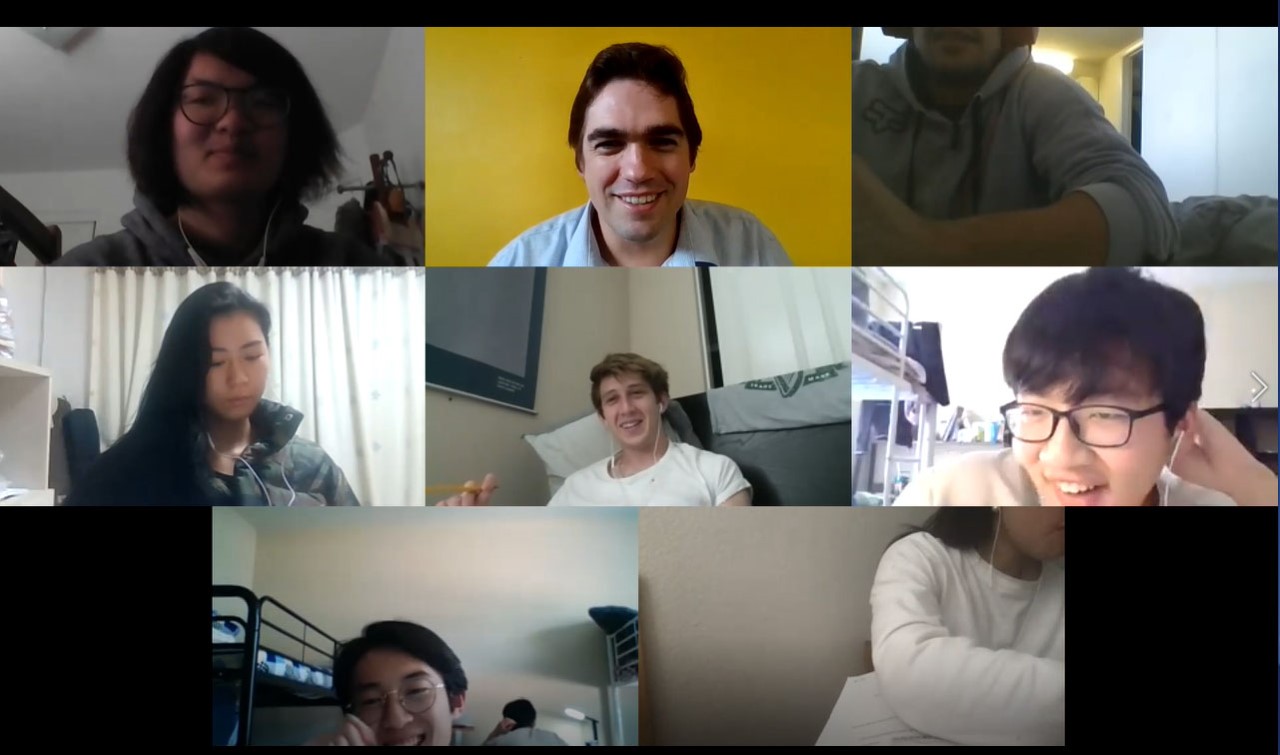
Online Class Meeting with Byron
Hear from a Stephanine, a current student Studying Chemical Engineering.
     |
isp@canyons.edu +1 (661) 362-3580 |

 My Canyons
My Canyons  Canvas
Canvas 
